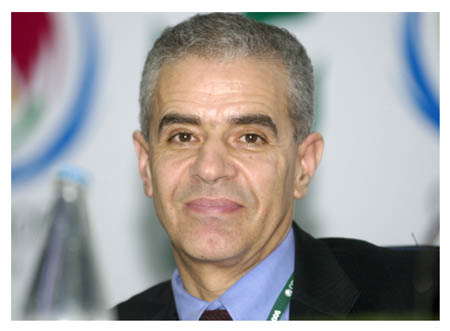Statement
by mr Ahmed Djoghlaf
The Executive Secretary of the
Convention on Biological Diversity
on the occasion of
The meeting on “biodiveristy in science and art”
10 march 2010
FLORENCE, ITALY


Ladies and Gentlemen,
In 2002 the Heads of State attending the Johannesburg World Summit on Sustainable Development agreed to substantially reduce the rate of biodiversity loss worldwide by 2010 – the so-called 2010 Biodiversity Target. However, today biodiversity is being lost more quickly than ever. The current rate of extinction is estimated to be up to 1,000 times higher than the natural rate of extinction. If this trend does not change, it is expected that an area of 1.3 billion hectares worldwide – about 1.5 times the United States – will completely lose its original biodiversity levels by 2050. It is no exaggeration to say that our quality of life will suffer tremendously as we lose more and more biodiversity. We depend on biodiversity for everything from food, fuel and medicines, to air and water purification and the pollination of wild plants and crops. But despite the great importance of biodiversity to human wellbeing, the far-reaching consequences of biodiversity loss are unknown to the general public and to policymakers. That is why the United Nations General Assembly declared 2010 the International Year of Biodiversity. This is a historic event in the life of the Convention on Biological Diversity (CBD), the international treaty devoted to the conservation and sustainable use of our biological resources. The goals the International Year are to raise awareness about the importance of biodiversity, to communicate the human costs of its ongoing loss, and to get people, and in particular youth and children, involved in efforts to conserve and sustainably use our natural heritage
I therefore commend you for organizing this conference on Biodiversity in Science and Art during this most important year. There is no better way to help Life of Earth than to bring these two great areas of human endeavor together in service of biodiversity. Moreover, there is no better place better to bring them together than Florence, the cradle of the Renaissance. Leonardo da Vinci famously said “the smallest feline is a masterpiece” – which he said not as an artist, nor as a scientist, but as a wide-ranging spirit in tune with the many-sided wonders of Nature.Such a far-reaching vision of Life on Earth is guiding the celebrations of the International Year of Biodiversity, which I am glad to say are off to an excellent start. The Year was officially launched in Berlin in early January under the chairmanship of the Chancellor Merkel. Many other important events are set to take place, and two in particular stand out. In September the 65th session of UN General Assembly will for first time ever devote an entire day to the question of biodiversity, its role in development, its role in the fight against climate change, and our actions for the future. And in October, the CBD’s tenth meeting of the Conference of the Parties will be held in Nagoya, Japan.
In Nagoya our 193 Parties will create new biodiversity targets for 2020 and 2050 as part of a post-2010 strategy for stopping biodiversity loss in the future. This will be done with the participation of a broad range of stakeholders, including youth, local and indigenous authorities, parliamentarians, cooperative agencies and the private sector. Ultimately, a grand global alliance of all sectors of society will be formed in Nagoya, making it a truly watershed moment in the struggle to preserve life on Earth.
I thank you for doing your part to save Life on Earth during this historic year, and urge you to continue your good work throughout 2010 and beyond. I do not have to tell you that with the future wellbeing of our children at stake, business as usual is no longer an option. As the slogan of the International Year reminds us, “Biodiversity is life. Biodiversity is our life.”
Thank you for your kind attention.

